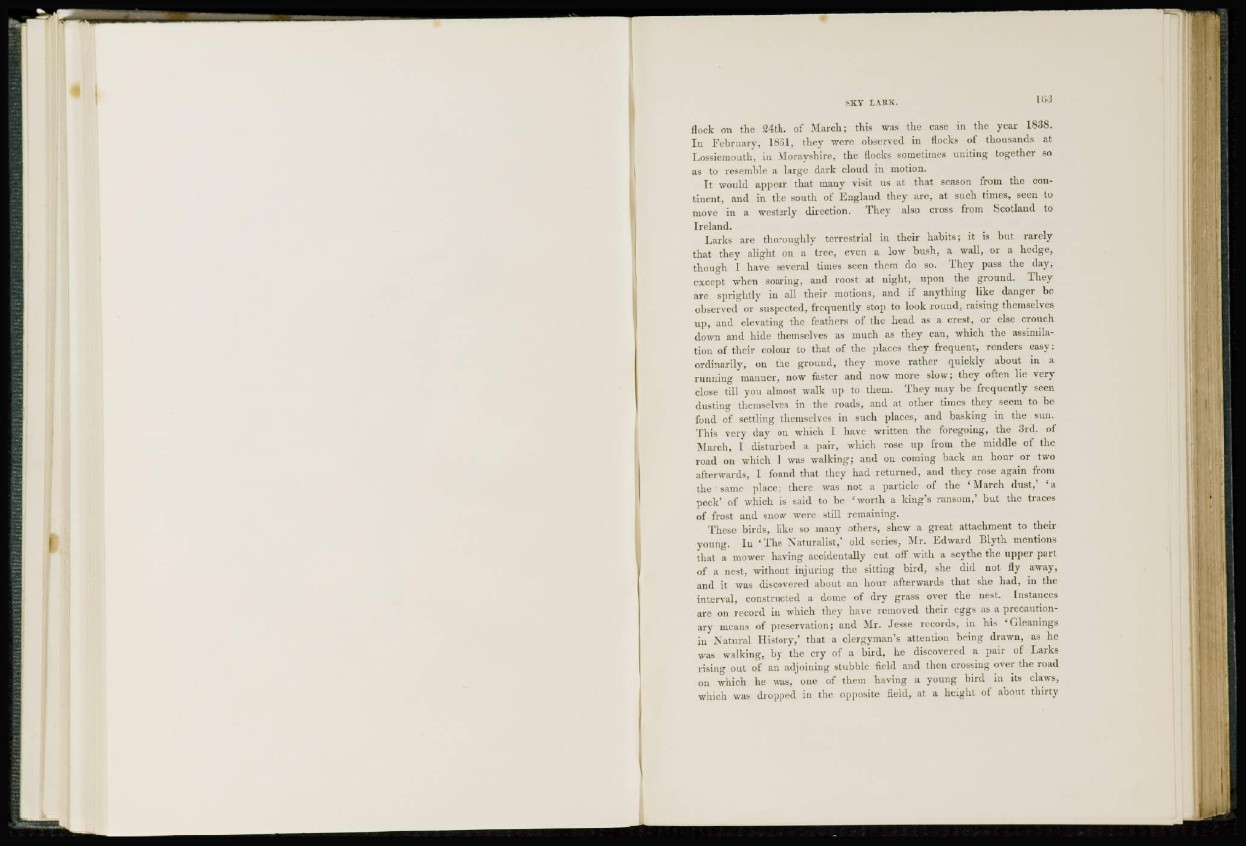
sKY LARK. Ibi
flock on the 24th. of March; this was the case in the year 1838.
In February, 1861, they were observed in flocks of thousands at
Lossiemouth, in Morayshire, the flocks sometimes uniting together so
as to resemble a large dark cloud in motion.
It would appear that many visit us at that season from the continent,
and in the south of England they are, at such times, seen to
move in a westerly direction. They also cross from Scotland to
Ireland.
Larks are thoroughly terrestrial in their habits; it is but rarely
that they alight on a tree, even a low bush, a wall, or a hedge,
though I have several times seen them do so. They pass the day,
except when soaring, and roost at night, upon the ground. They
are sprightly in all their motions, and if anything like danger he
observed or suspected, frequently stop to look round, raising themselves
up, and elevating the feathers of the head as a crest, or else crouch
down and hide themselves as much as they can, which the assimilation
of their colour to that of the places they frequent, renders easy:
ordinarily, on the ground, they move rather quicklv about in a
running manner, now faster and now more slow; they often lie very
close till you almost walk up to them. They may he frequently seen
dusting themselves in the roads, and at other times they seem to be
fond of settling themselves in such places, and basking in the sun.
This very dav on which I have written the foregoing, the 3rd. of
March. 1 disturbed a pair, which rose up from the middle of the
road on which I was walking; and on coming back an hour or two
afterwards, I found that they had returned, and they rose again from
the same place; there was not a particle of the 'March dust,' 'a
peck' of which is said to he 'worth a king's ransom,' but the traces
of frost and snow were still remaining.
These birds, like so many others, shew a great attachment to their
young. In 'The Naturalist,* old scries, Air. Edward Iilyth mentions
that a mower having accidentally cut off with a scythe the upper part
of a nest, without injuring the sitting bird, she did not fly away,
and it was discovered about an hour afterwards that she had, in the
interval, constructed a dome of dry grass over the nest. Instances
are on record in which they have removed their eggs as a precautionary
means of preservation; and Mr. Jesse records, in his 'Gleanings
in Natural History,' that a clergyman's attention being drawn, as he
was walking, by the cry of a bird, he discovered a pair of Larks
rising out of an adjoining stubble field and then crossing over the road
on which he was, one of them having a young bird in its claws,
which was dropped in the opposite field, at a height of about thirty